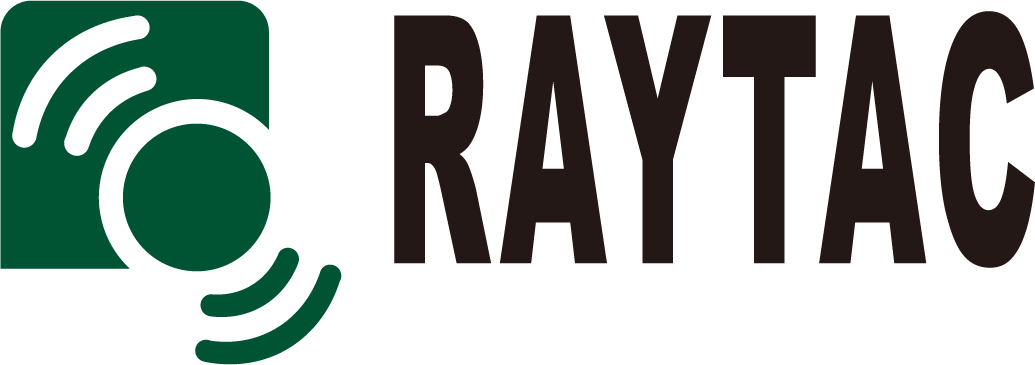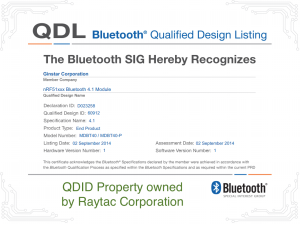Raytac’s pre-certified module for your convenience – but how?So, in this post, we would like to take you on a little journey through most of the important certifications that Raytac has pre-certified their modules with.
The exact topic is actually
what you need to know and what that means to you as a Raytac customer.

Obviously, each and every certification has their own rules, so that’s how we’re going to do this – one by one.
- FCC – (U.S.A.)
Most people in the industry have heard of FCC, but for you who really don’t know what it is, it’s the Federal Communications Commission in the United States of America. Although considered as a center for these regulations, you will soon realize that they’re not really the center of these regulations and laws at all.
So for the FCC certification, you can as a Raytac customer:
-
- Use Raytac’s certification ID directly on your finished product’s label
But you need to:
- Test FCC Part 15B EMC for your finished products
- IC – (Canada)
When it comes to the Industry Canada (yes, that’s what IC stands for), the regulations and procedures are much like their sibling FCC.
-
- Use Raytac’s certification ID on your finished product’s label (same as FCC)
But, just like FCC, you need to:
- Test IC ES003 (EMC)
- This can be combined together with the FCC Part 15B test
- TELEC – (Japan)
TELEC, sometimes referred to as MIC, is surprisingly simple.
What you will need to do is:
- Use Raytac’s certification ID on your finished product’s label
Yes – you can actually just go right ahead and implement and/or commercialize your product after its parts are all proven TELEC certified which is pretty neat. However, there is another test that you as a customer can do if you wish, and that is VCCI which is just like the EMC tests mentioned above with the only difference (in terms of regulation) is that it’s NOT mandatory. Thus, you can choose not to do it as well.
- KC – (South Korea)
As for the Korean regulation, these are the things you will have to do:
- Test EMC for wireless (KN301489 – same as CE’s EN301489)
- Test EMC for wire (IO port) (KN3235)
- If, and only if, your final product is equipped with IO ports, that is.
These two tests needs to be done locally (Korean test lab) and depending on which test it is, you’ll have to deal with them differently.
Firstly, for the wireless test, you can refer to Raytac’s own certification report so that the lab knows the module itself has passed although it still needs to be tested.
Secondly, the for wire (IO port) test, you will have to do from scratch essentially.
Thus, even though we have applied for KC for our modules, you will still have to test them locally.
- CE (Radio Equipment Directive 2014/53/EU (RED)) – (EEA, Europe)
Although CE is considered as strict regulation, the procedure is pretty simple. Simply put, you will have to conduct tests on a few different samples, and the procedure goes:
- Test on Conducted engineering sample (EN300328)
- You can refer to Raytac’s test report, if the test lab accepts it, that is.
To ensure that they do, you can choose to conduct your tests at the same lab as Raytac – SGS.
- Test on Radiated engineering sample (EN300328)
- Test EMC (EN301489)
- Test Safety (EN60950)
- Subject to change to EN62368 in 2021
- SRRC
Simply put, you will have 2 scenarios:
- Your end product can either be defined as a “Home Appliances" or an “Office Utilities" product
- Then you can simply refer Raytac’s SRRC ID (module policy just like FCC/IC/TELEC)
- Your end product is neither of the above
- You have to apply for your own SRRC ID by testing everything required by the regulation
- NCC
They go by a “Platform policy" which basically means that as long as you are just adding functionality onto an already existing feature, then you can leverage Raytac’s NCC ID on your product’s label directly (module policy just like FCC/IC/TELEC/SRRC). Otherwise, you will have to apply for a new one.
Thus, the procedure becomes:
- Adding functionality of an already existing feature (a.k.a. platform)?
- Then you can simply refer Raytac’s NCC ID on your product (module policy just like FCC/IC/TELEC/SRRC)
- New ideas/features?
- Sorry, you have to apply for your own NCC ID by conducting all tests necessary
- RCM
Australia’s RCM (Regulatory Compliance Mark) is a lot like CE, much like IC is similar to FCC.
When applying to this certification, you will be in either of these two circumstances:
- CE already done.
- You can refer to your own CE certification and ask your test lab to copy the report to your RCM application.
- CE NOT done.
- You must conduct the test from scratch. But it is a whole lot like CE, meaning:
- Test on Conducted engineering sample
- Test on Radiated engineering sample
- Test EMC
- Test Safety
- Bluetooth Certification
Last, but definitely not least, is the Bluetooth Certification. For this one, choosing Raytac’s modules will bring you great benefits. But first, you need to:
- Apply for Bluetooth SIG’s “Adopter Membership" (free)
- You can apply for the membership here
- Purchase your DID
- Leverage Raytac’s QDID
- To activate your newly purchased DID
For your first product, that is all you will have to do. But what if you come up with a new model of the product? Before you ask, I will answer “No – you don’t necessarily have to purchase another DID." In order for this to be true though, your new product cannot have either of these things changed:
- Hardware
- Unless you are still using Raytac’s module
- Feature
- Unless you are still using Raytac’s module
- Brand Name
- Brand name remains unchanged.
Although you might be able to apply for these certifications all on your own without trouble whatsoever, we always encourage customers using Raytac’s BLE modules to contact us before hand so that we can provide you valuable information. This way, you will get unbiased guidance which will save you time and money.
As always – Happy tinkering everybody 🙂



 Obviously, each and every certification has their own rules, so that’s how we’re going to do this – one by one.
Obviously, each and every certification has their own rules, so that’s how we’re going to do this – one by one.









